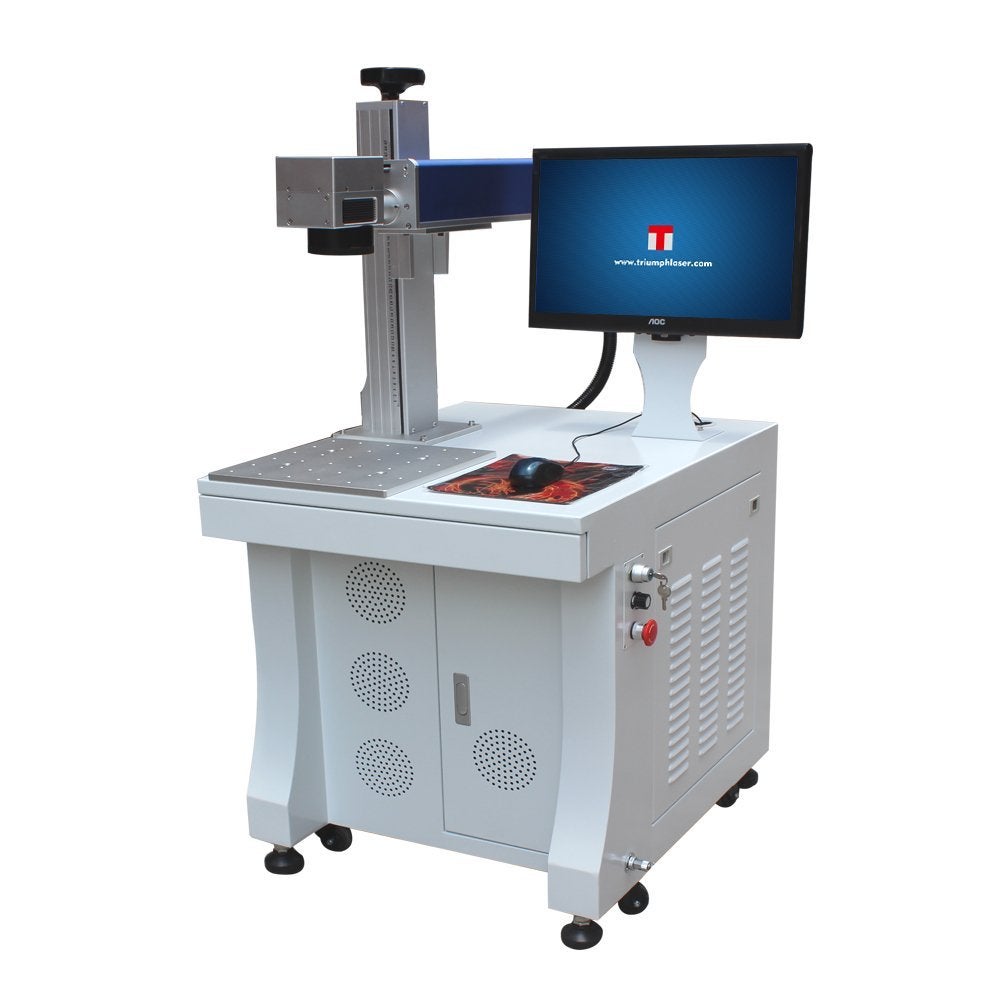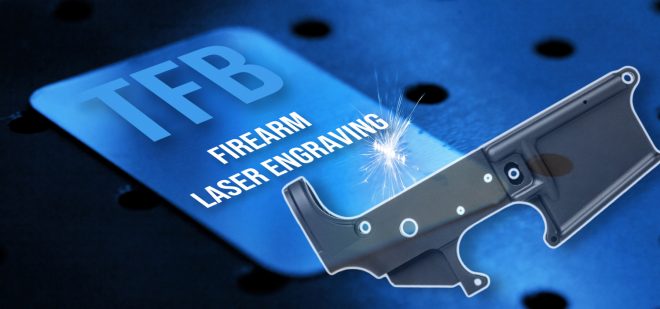Firearm laser engraving is a burgeoning business. On a consumer scale, there are a few handful of FFL’s across the country equipped to engrave materials like aluminum, steel, and titanium. These services are provided mostly for the marking requirements for National Firearms Act (NFA) weapons like short barrel rifles (SBR’s) and Form 1 silencers. But as prices have dropped and technology has advanced, the use of powerful lasers in the gun world has exploded. In this TFB series, we’ll research different types of lasers, the types of materials that can be engraved, and follow the process of buying, owning, and using a fiber laser for firearm markings and engravings.
LASER TAGGING: Firearm Laser Engraving And Marking – An Introduction
This series will focus on fiber laser marking from a layperson’s perspective. I am by no means an expert and you should seek professional training and guidance before using any type of machinery. Please follow all safety precautions – lasers capable of engraving metal can permanently blind you or bystanders in an instant.
Marking/Engraving @ TFB
- ATF NFA Marking Requirements: Get. It. Right.
- POTD: Laser Engraving Like None Other
- Art At Arms – Custom Laser Engraving & Texturing
Editor’s Note: The good people at Triumph Laser have loaned me one of their fiber lasers for the course of the series. They have not paid me or TFB for advertising and at the end of the review period, the laser will either be returned or purchased. Triumph has been extremely helpful throughout the process, even when I approached them as a retail consumer.

Triumph Laser used in this review series:
- Triumph 30w Fiber Laser Marking/Deep Engraving Machine – (Price on Amazon)
Other Triumph Laser models:
- Triumph 50w Fiber Laser Marking deep Engraving Machine – (Price on Amazon)
Safety Equipment;
- Professional Laser Safety Glasses (190nm-450nm / 800nm-1700nm Wavelength) – $38.99
- Solder Fume Extractor Fan Smoke Absorber – (Price on Amazon)
Firearm Laser Engraving: Understanding Your Objectives
A look through Amazon will turn up thousands of laser engraver models with prices ranging from $299 for hobbyist setups and fiber laser systems close to $10,000. It is up to you as an individual or a business to figure out three key criteria before going any further:
- What types of material will you be marking/engraving?
- How much will you be marking/engraving on a daily, weekly or monthly basis?
- How fast do you need to complete each project?
Since I have recently completed my manufacturing 07 FFL process (another new pending TFB series), I wanted a way to properly mark firearm receivers and barrels for certain projects without the need for an approved ATF variance to send parts out to a third party for marking. But, since I will rarely mark more than one part each day, I don’t need a high volume machine. For me, the 30W Fiber laser from Triumph is more than enough for my needs with some room to grow.
Firearm Laser Engraving: Types Of Laser Engravers
Again, not being a laser expert (but I pretend to be one on the internet), let’s look at the two main types of lasers used for consumer and small business marking and engraving applications – CO2 Lasers and Fiber Lasers.
CO2 Lasers
In the most basic terms, CO2 lasers are blunt tools used for cutting and welding. When it comes to marking and engraving performance, they can be used on some softer/coated metals, but perform best on wood and plastics. They use a lot of electricity and can require frequent and expensive maintenance.
Fiber Lasers
Fiber lasers are well suited for detailed marking and engraving because the beam can be focused down to a very small spot on the target material. Aluminum, steel and titanium can be marked and the depth/speed of the process is directly related to the power of the laser itself. There are no regular maintenance requirements and the power consumption is much lower than its gas laser counterpart. Fiber lasers can not be used on wood – think of a magnifying glass in the noon summer sun experiment. Using a fiber laser on wood, the risk of starting a fire is high and the quality of the markings will be low.
Bottom line, for marking and engraving firearms, you are going to want a fiber laser.
Firearm Laser Engraving: Watt? How Much Power Do You Need?
Now that we have determined the type of laser you will need, let’s talk power. A fiber laser’s power is expressed in Watts – the higher, the “better”. In this case, “better” means marking metals to a certain depth at a faster pace. A 20W fiber laser, which is the lowest power available, may take 10 minutes to make a manufacturer’s mark, whereas a 50W laser is going to cut that time to two or three minutes. Both will get the job done, but it you are marking a few dozen pieces a day, you will want the additional power to speed things along.
For those of us who may mark or engrave a couple pieces a month, a 20W or 30W fiber laser will be more than suitable for the tasks at hand.
Firearm Laser Engraving: Eye Protection, Space, Fumes, And Ventilation
As I mentioned at the beginning, eye protection is required for laser marking activities. Find out the wavelength of your laser marking machine and buy protective eyewear that is specifically designed to block it out.
You will also want a physically controlled space to setup your fiber laser to prevent anyone from accidentally firing it up. The Triumph Lasers all come with several safety mechanisms to prevent the machine from running without user access.
Lastly, because you are cutting and vaporizing metals, you will want a ventilation system that actively pulls fumes and particles into a filter that is designed for soldering, welding and other industrial uses. These can range from $300-$500 to thousands of dollars depending on the amount of marking you plan on doing. A mask is not the answer here – the fumes and particles from laser marking can hang in the air for a long time and are a serious respiratory health hazard.
Coming Up: Purchasing And Setup Of Your Fiber Laser Marking Machine
Up next we’ll talk about purchasing and setup of a fiber laser and start looking at the process to engrave some test materials.
I realize that this is going to be a fairly niche series – most of you may never be in the market for a marking laser setup. I hope you’ll follow along and laugh at all my attempts (hopefully before I put an actual receiver under the knife). But I also realize that there are hundreds of FFLs around the country who could benefit from a layperson’s tutorial on marking and engraving. These lasers are pretty remarkable, they are capable of NFA marking, artistic engraving and can handle precision stippling of polymer frames and parts.
I’d like to thank my friend Sebastian, inventor of the Topside Takedown 10/22 firearm, for helping me through this fiber laser experiment. We should have some updates on his progress soon.
See you soon. Thanks for reading TFB.
We are committed to finding, researching, and recommending the best products. We earn commissions from purchases you make using the retail links in our product reviews. Learn more about how this works.
 Your Privacy Choices
Your Privacy Choices

